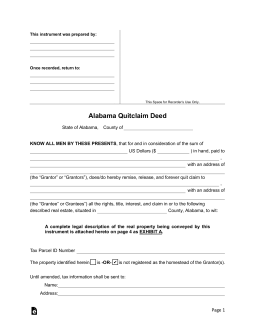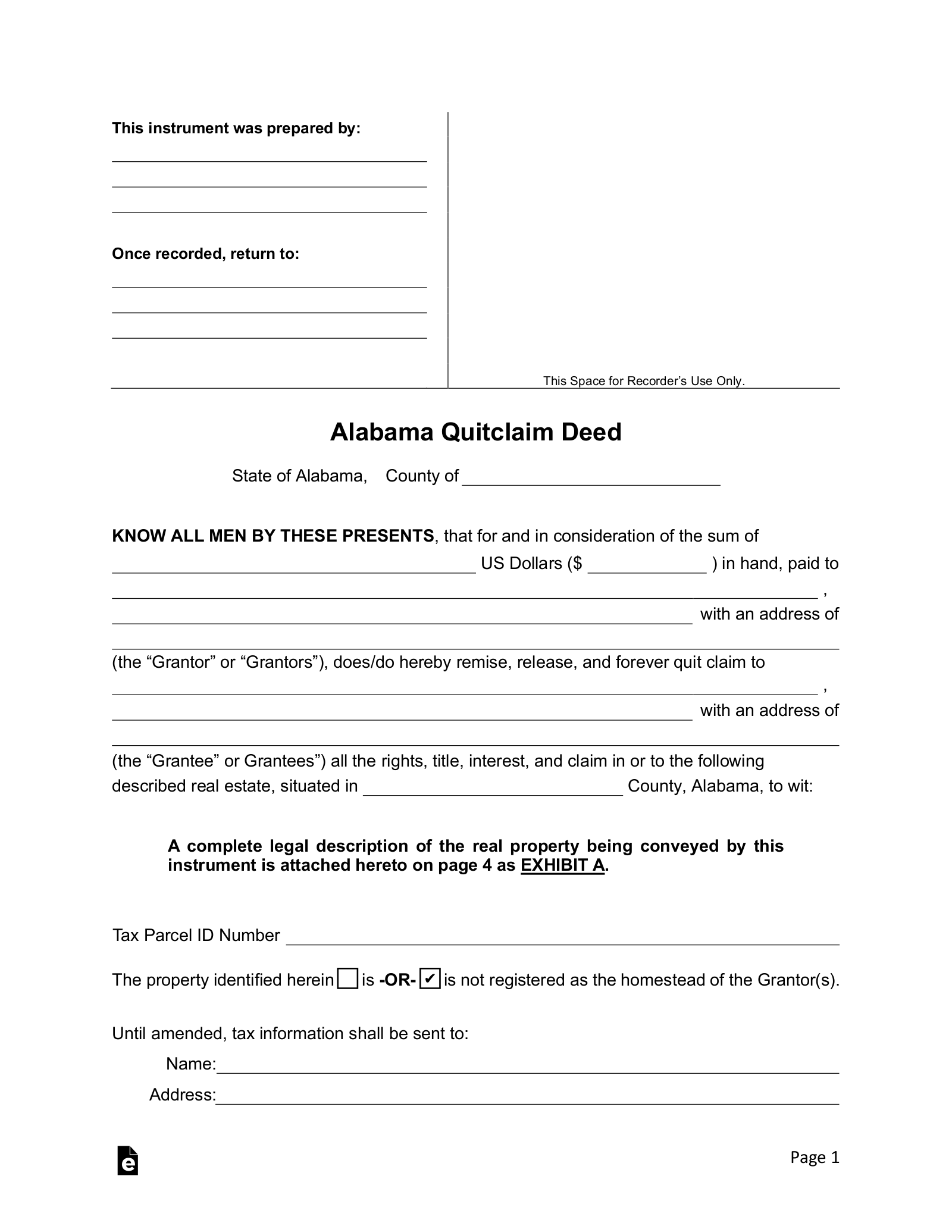Updated February 01, 2024
An Alabama quitclaim deed is a document that transfers property ownership interest from one party to another. The grantor (“seller”) will be the party that is giving their ownership interest, and the grantee (“buyer”) will be the party that is paying or trading for said interest.
Commonly Used
The most common use for a quit claim deed is during a divorce when the ownership is being transferred to real estate or for any arrangement where it is known that the Grantor owns the real estate. This is due to the fact that a quit claim deed does not guarantee that the Grantor owns the property.
Laws
- Real Estate Sales Validation (Form RT-1) – A quitclaim deed is required to have this form completed when submitted to the Probate Judge’s Office.[1]
- Recording – A quit claim deed should be filed in the office of the County Probate Judge along with any required fees.[2]
- Signing Requirements – If a notary acknowledgment is not included in the conveyance of the property, a witness must attest to the conveyance. If the party conveying cannot write, the conveyance of property must be attested by two witnesses.[3]
- Statute – Due to deeds with warranties, a quitclaim cannot use any of the terms “grant,” “bargain,” or “sell” and should use “hereby quitclaim and convey” or other similar language.[4]


